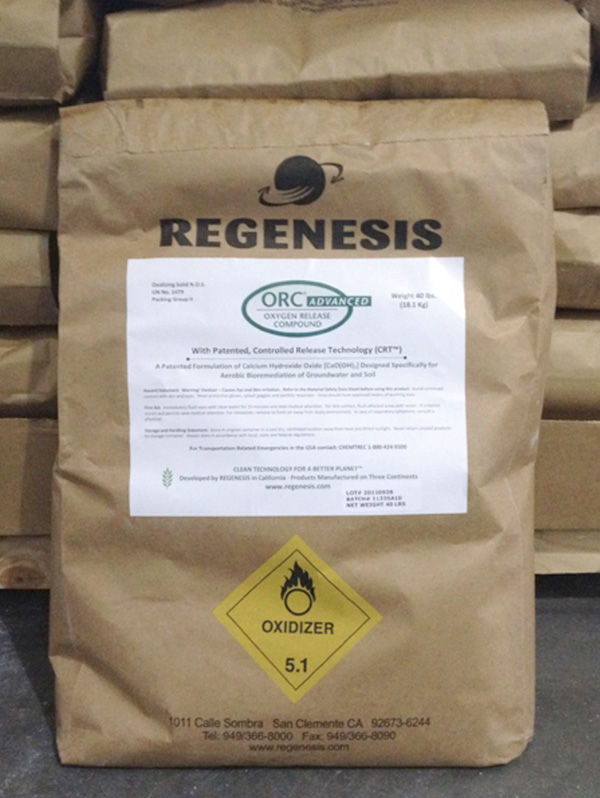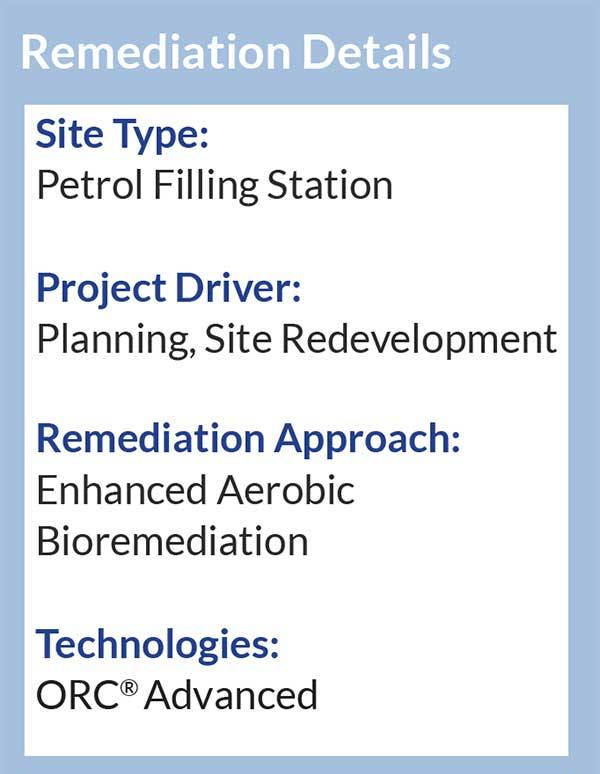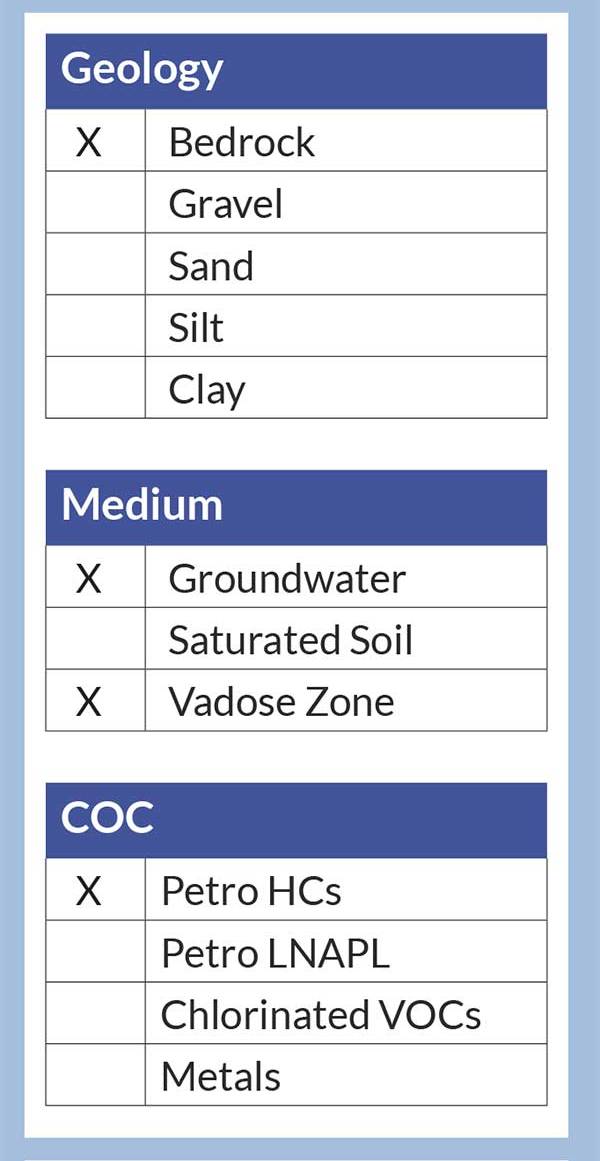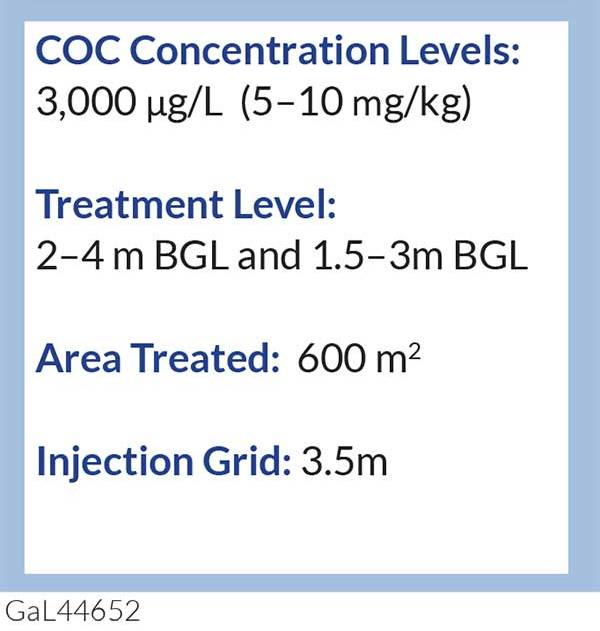Significant project cost savings achieved through in situ bioremediation
Summary
Following a site investigation (SI) and the removal of 8 underground storage tanks at a former petrol filling station, it became clear that the groundwater and soils beneath the site were grossly impacted by petroleum hydrocarbons (TPH). The geology comprised of made ground underlain by weathered limestone at 1m BGL. Though the groundwater concentrations were relatively low (3,000 μg/L TPH), the high sorbed mass in the soils (up to 10,000 mg/kg) was of concern. Though the remediation strategy did allow for the excavation and treatment of the weather material, due underground utilities most of the impacted material could not be excavated for health and safety reasons, without diverting the existing underground infrastructure.
REGENESIS and the Environmental Consultant formulated a remediation strategy comprising of partial excavation of impacted material (where allowed) and in-situ enhanced aerobic bioremediation of the groundwater for betterment of underlying conditions. All to be validated by groundwater monitoring to demonstrate contaminant mass reduction across the site.




Treatment
An ORC-Advanced® slurry was injected across 54 No. wells installed into the underlying bedrock with specific doses in the northern and southern areas of the site to target where TPH had been recorded during the SI. ORC-Advanced was applied across the entire plume, in order to provide enhanced aerobic biological degradation of the dissolved phase for 12 months from a single injection.
What’s Special?
- A remediation strategy where validation of the groundwater (not soil) achieved site sign-off, resulting in quick site closure.
- The in situ remediation allowed for injection adjacent to underground utilities without damaging them, avoiding the need for excavation or re-routing infrastructure.


 Americas
Americas Europe
Europe Français
Français Deutsch
Deutsch Italiano
Italiano Español
Español


